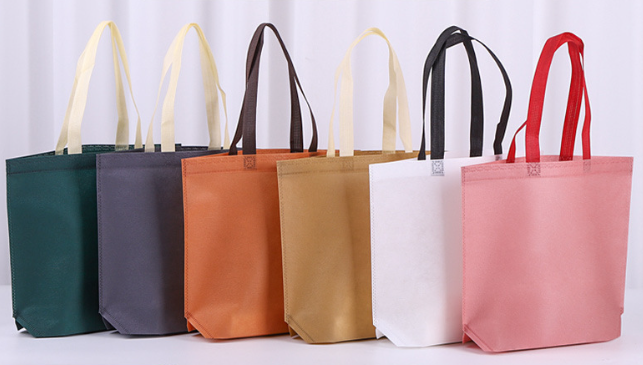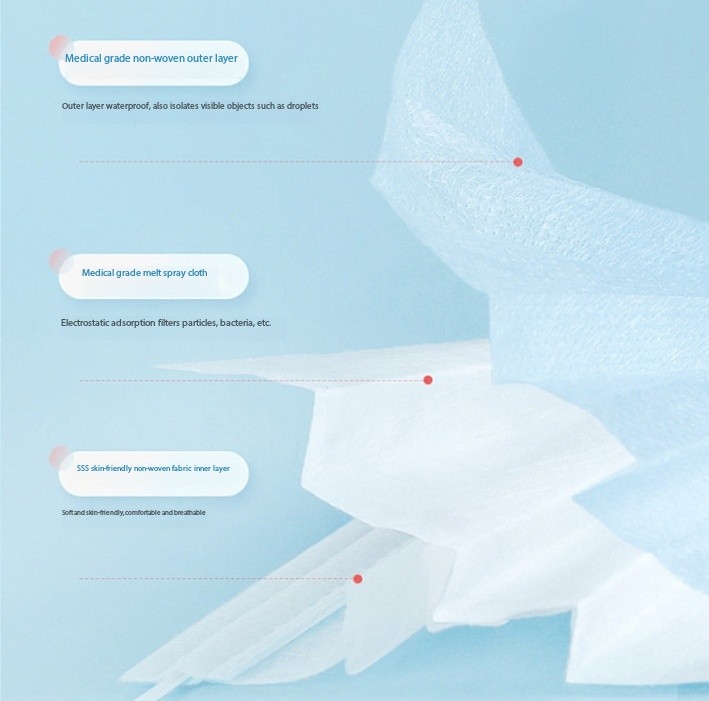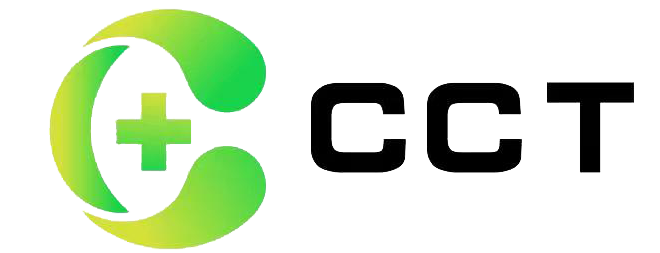Reusable medical instruments must be cleaned, disinfected, inspected, and properly packaged before undergoing steam or low-temperature sterilization. The purpose of packaging is to create both physical support and a microbial barrier, ensuring that the instruments remain sterile and safe before use.
Nonwoven fabric plays a critical role as a packaging material in Central Sterile Supply Departments (CSSDs), directly impacting the safety of countless patients. Today, we delve into the essential differences between nonwoven fabric, medical nonwoven fabric, and medical sterilization-grade nonwoven packaging fabric—what makes this thin layer of material so powerful?
Nonwoven Fabric: The “Industrial Revolution” of Textiles
Nonwoven fabric is a type of fabric that does not require traditional spinning or weaving.
Unlike woven textiles, it is made by physically or chemically bonding fibers directly together. You won’t find a single continuous thread in it—this is its unique feature.
Thanks to its properties—moisture resistance, breathability, biodegradability, softness, and low cost—nonwoven fabric has quickly found its way into many industries. Common examples include shopping bags, wallpaper backing, disposable bed sheets, diapers, wipes, face masks, isolation gowns, and more.
However, not all nonwoven fabrics offer microbial barrier protection. Some types have loose fiber structures that allow microorganisms to penetrate. Using such materials to package medical instruments could have serious consequences!

Medical Nonwoven Fabric: A First Line of Defense in Healthcare
Medical nonwoven fabric is an upgraded version of general nonwoven material, typically made using spunbond and meltblown processes. It is characterized by bacterial resistance, hydrophobicity, breathability, and lint-free properties.
In the medical field, it’s widely used for:
- Disposable surgical gowns and caps, which require softness, high tensile strength, and breathability.
- Medical masks, typically three-layered to prevent cross-infection via respiratory droplets.
- Medical adhesive tape backing, which demands strong adhesion and breathability.
- Plaster cotton linings, providing a clean contact layer for wound care.
Important: Even though these materials meet medical product standards, not all medical nonwoven fabrics are suitable for sterilizing reusable instruments. They lack the specialized structure and verified performance required for sterilization packaging.

Sterilization-Grade Medical Nonwoven Packaging Fabric: The Ultimate Guardian of Instrument Safety
This is the true hero of the CSSD.
Sterilization-grade medical nonwoven packaging fabric is specifically engineered for sterilizing reusable medical instruments—and its advanced design may surprise you.
True sterilization packaging materials are single-use and often constructed with SMS (Spunbond–Meltblown–Spunbond), SMMS, or even SMMMS five-layer composite structures:
- Spunbond layers: Made from continuous filaments to provide mechanical strength and durability.
- Meltblown layers: The core bacterial barrier, formed with ultra-fine fibers as small as 0.03 microns, creating a dense microbial shield.
Standards and Requirements for Sterilization-Grade Medical Nonwoven Packaging Fabric
Sterilization packaging materials must comply with GB/T 19633 (“Packaging for terminally sterilized medical devices”) and YY/T 0698.2 (“Requirements and test methods for sterilization wrap materials”). Key requirements include:
1. Quality Management System
Nonwoven Manufacturers must operate under certified quality systems such as ISO 9001 or ISO 13485.
2. Cleanliness
Materials must meet cleanliness standards, and production must occur in cleanrooms (e.g., ISO Class 8 or 100,000-grade environments) to avoid contamination.
3. General Requirements
- No extractable substances or unpleasant odors.
- Free from defects such as perforations, tears, creases, or thickness inconsistencies.
- Weight per unit area must be within ±5% of the nominal value.
- Acceptable linting level.
- Must not contain or release toxic substances such as lead or aromatic amines.
4. Material Composition and Traceability
- Full knowledge and control of material sources, especially recycled content.
- Must comply with national standards for food-contact-grade plastics (e.g., polypropylene only, without calcium carbonate fillers).
5. Microbial Barrier
- Assessed via LRV (Log Reduction Value) spore retention tests.
- Evaluation under both dry and humid conditions.
- Proven 180-day sterile shelf life under validated storage.
6. Biocompatibility and Toxicology
Applicable to materials in direct contact with instruments. Tested for skin irritation, sensitization, and cytotoxicity.
7. Physical and Chemical Properties
Must meet minimum values for:
- Tensile strength
- Thickness uniformity
- Tear resistance
- Air permeability
- Burst strength
- Hydrostatic pressure
Also includes tests for pH, chloride, and sulfate levels to ensure compatibility with instruments and sterilization methods.
8. Sterilization Compatibility and Residue Assessment
- Proven compatibility with intended sterilization methods (e.g., STEAM 121°C / 134°C, EO, VH₂O₂, FORM).
- Barrier and physical integrity must remain within limits after sterilization.
- Evaluation of residual sterilants to ensure safe levels post-processing.
9. Forming and Sealing
Forms a tortuous path when folded twice—creating a sterile barrier without heat sealing.
10. Shelf Life
- Shelf life before sterilization (e.g., 36 months).
- Sterile shelf life post-sterilization (typically 180 days).
Before use, hospitals should require third-party test reports and batch quality certificates from suppliers to ensure material safety and performance. Poor barrier protection or weak material could lead to serious safety risks.
Final Thought
Not all nonwoven fabrics are fit for sterilizing reusable medical instruments.
Selecting certified sterilization-grade medical nonwoven packaging isn’t just a matter of compliance—it’s a commitment to quality in healthcare and patient safety.


